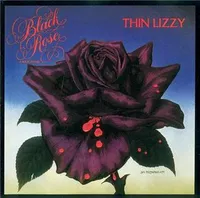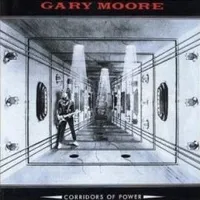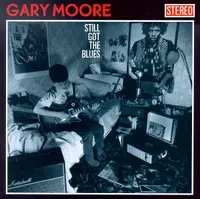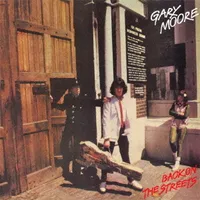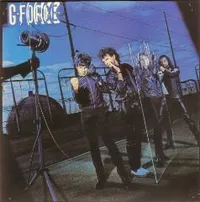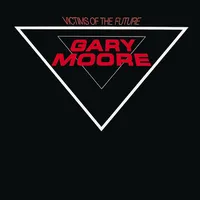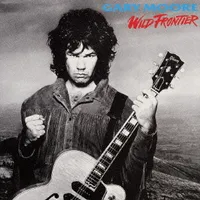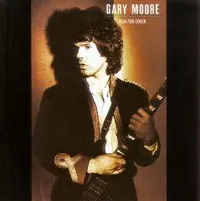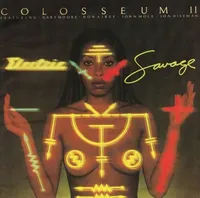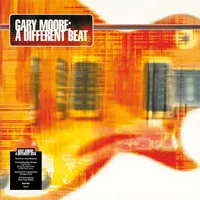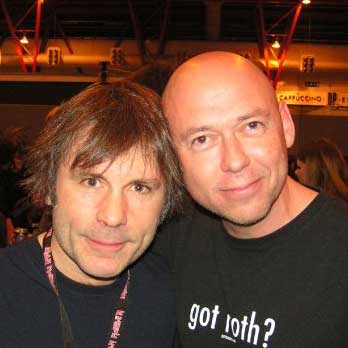The Gary Moore albums you should definitely own
With Thin Lizzy, on solo albums and playing jazz rock, Gary Moore proved himself to be one of the greatest guitarists of his generation. These are his best albums
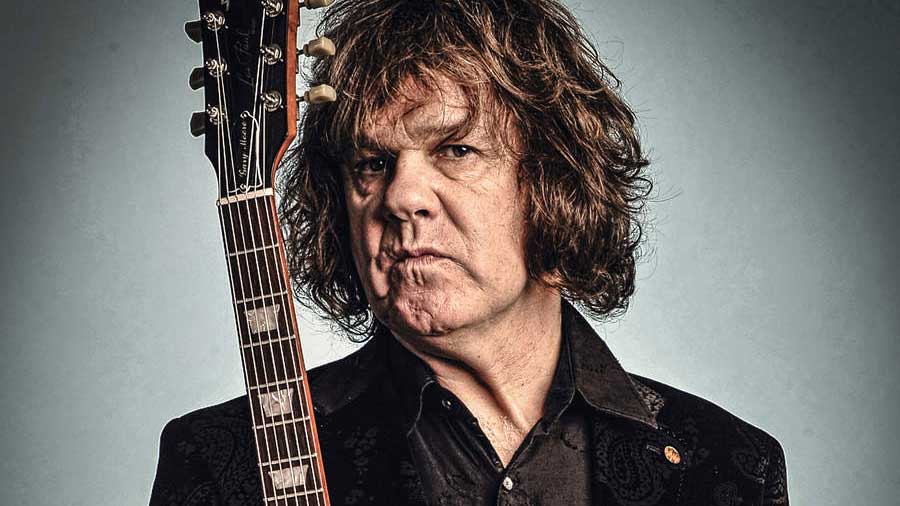
The death of Irish guitar hero Gary Moore at the age of 58, on February 6, 2011, was marked by numerous tributes. Moore was remembered by Ozzy Osbourne as “a phenomenal musician”, by Queen’s Roger Taylor as “a virtuoso”, by Scott Gorham, who played alongside Moore in Thin Lizzy, as “a great player and a great guy”. And when Eric Clapton performed at the Royal Albert Hall in April 2011, he played an acoustic version of Moore’s Still Got The Blues – a dedication from one guitar great to another.
Robert William Gary Moore was born in Belfast on April 4, 1952. He was just 16 when he first made a name for himself as a member of Dublin-based blues rock group Skid Row. And it was at this early stage of his career that he formed a lasting bond with Phil Lynott, who was briefly the singer in Skid Row before going on to lead Ireland’s greatest rock band, Thin Lizzy.
Moore joined Thin Lizzy for a short period in 1974, and later returned twice. He made just one album with the band, Black Rose, in 1979. But he and Lynott were made for each other, and they continued working together for many years until Lynott’s death in 1986.
Moore had a remarkably broad stylistic range. In the late 70s he recorded three albums of jazz rock fusion with Colosseum II. But it was as a hard rock guitarist that he made much of his best music, both with Thin Lizzy and as a solo artist, and it was as a blues player that he made a successful reinvention in the latter part of his career, beginning with the Still Got The Blues album in 1990.
In 1994 Moore lived out a teenage fantasy when he joined Clapton’s former Cream bandmates Jack Bruce and Ginger Baker in the short-lived project BBM. In ’95 he also paid tribute to his greatest influence, original Fleetwood Mac guitarist Peter Green, with the covers album Blues For Greeny.
Moore was himself an inspiration, to a generation of rock guitarists including Slash, Randy Rhoads, Joe Bonamassa and, not least, Vivian Campbell, who in 2011 took time out from Def Leppard to play Moore’s role in the reunited Thin Lizzy.
“Gary didn’t fuck about when it came to playing guitar,” says Campbell. “There was a full-force physicality to the way he played. He didn’t just play fast, he played furious. That was the difference between Gary Moore and other guitarists – that intensity.”

Thin Lizzy - Black Rose (Vertigo, 1979)
Thin Lizzy’s 1974 album Nightlife featured Moore on one song, their classic ballad Still In Love With You. But in his third and final stint with the band, he stuck around long enough to record a whole album. And it was the best he ever made.
Moore put a rocket up Lizzy’s arse. His blistering double-tracked guitar solo on the hit single Waiting For An Alibi had fellow Lizzy guitarist Scott Gorham joking, “Fuck you, Gary!” And as Gorham later stated: “It was Gary’s idea to bring the Irishness back into Thin Lizzy.” The result was the album’s rollicking, beautiful, mythic title track, Roisin Dubh (Black Rose) A Rock Legend.
Gary Moore - Corridors Of Power (Virgin, 1982)
This, Moore’s best solo album, is a hard rock tour de force on which he stamped his authority as a major star in his own right. Backed by a band of the highest calibre – drummer Ian Paice (Deep Purple/Whitesnake), bassist Neil Murray (Whitesnake) and keyboard player Tommy Eyre (Joe Cocker) – Moore proved a ballsy singer as well as a shit-hot guitarist.
Corridors Of Power has many great songs: the crunching Don’t Take Me For A Loser, power ballad Always Gonna Love You, and the self-explanatory Rockin’ Every Night. And on End Of The World Moore’s fast fingers whipped up a convincing approximation of the apocalypse.
Gary Moore - Still Got The Blues (Virgin, 1990)
By the end of the 80s, Moore had tired of hard rock. This much was evident on his laboured ’89 album After The War. He responded by going back to his roots – playing electric blues.
He was rewarded both with critical acclaim and a hit record. Still Got The Blues – which featured guest appearances from blues legends Albert Collins and Albert King, and George Harrison (Moore returned the favour for Harrison’s supergroup Traveling Wilburys) – went Top 20 in the UK and was Moore’s only top 100 album in the US. And with this album’s soulful, stinging title track he created a modern blues classic.
Gary Moore - Back On The Streets (MCA, 1978)
It was Moore’s first proper solo album, but Phil Lynott played a key role in Back On The Streets. And by the time the album was released, he’d coaxed the guitarist back to Thin Lizzy. Lynott took the lead vocal on Parisienne Walkways, which would become Moore’s signature hit.
The pair also reworked Lizzy’s Don’t Believe A Word in its original slow blues format to brilliant effect, and had a blast with Lynott’s tongue-in-cheek song Fanatical Fascists. Moore showed off his chops on two jazz-rock instrumentals, but it was on the album’s kick-ass title track that he really let rip – as only he could.
Gary Moore - G-Force (Jet, 1980)
Having quit Thin Lizzy for the final time in July 1979 amid rows over Lynott and Gorham’s drug use, Moore settled briefly in LA – where, bizarrely, he hooked up with two of the most infamous druggies in the business. First, he worked with Ozzy Osbourne. When that didn’t gel he formed a new band, G-Force, with Glenn Hughes. But Hughes was promptly fired and the G-Force album was completed with a new singer, Willie Dee.
It’s Moore’s lost classic, full of punchy hard rock. And on the explosive double-whammy of White Knuckles/Rockin’ And Rollin’, he answered Eddie Van Halen’s Eruption – with interest.
Gary Moore - Victims Of The Future (10, 1984)
The follow-up to Corridors Of Power was essentially a repeat performance: Murder In The Skies is as cataclysmic as End Of The World; Teenage Idol is as gonzoid as Rockin’ Every Night; and, having nailed a killer version of Free’s Wishing Well on Corridors, on Victims Moore did likewise with The Yardbirds’ Shapes Of Things, with backing vocals from Slade foghorn Noddy Holder.
Victims Of The Future also includes Moore’s second-most famous rock ballad, Empty Rooms, and an epic title track. At Donington in 1984, Moore faced off against Eddie Van Halen and Angus Young in a battle of the guitar heroes. And won.
Gary Moore - Wild Frontier (10, 1987)
The first album Moore recorded after the death of his friend Phil Lynott, Wild Frontier carried a simple dedication on its cover: ‘For Philip’. Moore had written the album’s title track for Lynott to sing. In the end, the song and the album would serve as an epitaph.
There is a flavour of Moore’s and Thin Lizzy’s Irish heritage in Over The Hills And Far Away, a Top 20 hit, and in Johnny Boy, the album’s closing eulogy. And on The Loner, an instrumental written by ex-Jeff Beck Group keyboard player Max Middleton, Moore’s playing has a deep and powerful emotive quality. Wild Frontier was the perfect tribute to Lynott.
Gary Moore - Run For Cover (10, 1985)
After the G-Force debacle in 1980, Glenn Hughes was understandably surprised when Moore brought him in as co-creator on Run For Cover. But, once again, this dream team quickly turned sour. Hughes was a crack addict, and when Moore found out he was promptly fired.
As a result, Hughes featured on only half of the album, and delivered a great lead vocal on Reach For The Sky. But the best tracks were the two that Moore recorded with Phil Lynott: the classic top five hit Out In The Fields, and Military Man, originally written for Lynott’s post-Lizzy band Grand Slam. These tracks were Lynott’s last great performances.
Colosseum II - Electric Savage (MCA, 1977)
As Spinal Tap discovered, jazz-rock fusion isn’t for everyone. But it was in this idiom that Gary Moore really stretched himself as a musician. In 1975 he teamed up with drummer Jon Hiseman to form Colosseum II, the successor to Hiseman’s pioneering late-60s fusion group Colosseum. And of the three albums recorded by Colosseum II, Electric Savage, the second, is the best.
Also featuring future Rainbow/ Deep Purple keyboard player Don Airey and bassist John Mole, who replaced original member Neil Murray, the album showcases a level of virtuosity that makes Yes sound like a punk band.
...and one to avoid
You can trust Louder
Gary Moore - A Different Beat (Castle, 1999)
As this album’s title indicated, Moore was thinking outside the box in 1999. But in attempting to move with the times, and to expand his audience beyond blues and rock fans, he made the worst album of his career.
Utilising modern dance beats was an experiment that failed miserably – no more so than on Fatboy, a clunking and silly shout-out to star DJ Norman ‘Fatboy Slim’ Cook. And Moore even made a hash of Jimi Hendrix’s Fire. A Different Beat was a complete flop, peaking at No.133 in the UK chart. So Moore’s next move was a no-brainer, and his next album had an equally significant title: Back To The Blues.
Sign up below to get the latest from Classic Rock, plus exclusive special offers, direct to your inbox!
Freelance writer for Classic Rock since 2005, Paul Elliott has worked for leading music titles since 1985, including Sounds, Kerrang!, MOJO and Q. He is the author of several books including the first biography of Guns N’ Roses and the autobiography of bodyguard-to-the-stars Danny Francis. He has written liner notes for classic album reissues by artists such as Def Leppard, Thin Lizzy and Kiss, and currently works as content editor for Total Guitar. He lives in Bath - of which David Coverdale recently said: “How very Roman of you!”
